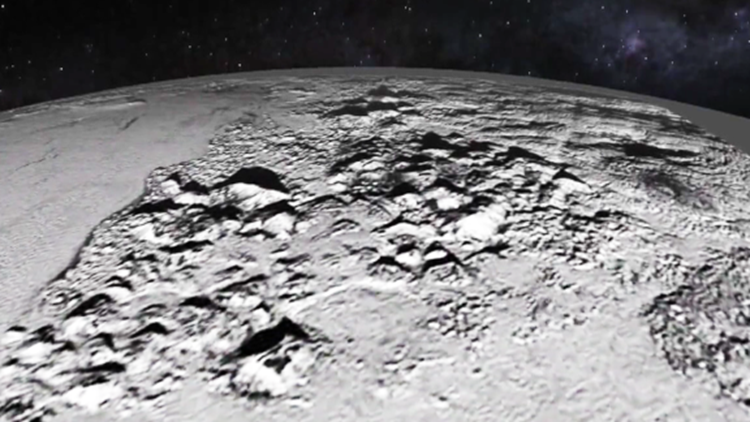When NASA’s New Horizons spacecraft flew past Pluto in 2015, researchers hoped that its data would help them unravel some of the dwarf planet’s mysteries. Instead, the discoveries made during the close-up look at Pluto and its moon Charon revealed more questions that needed answering.
One of the big revelations from the flyby was the discovery of an ocean beneath the icy shell encapsulating Pluto. The ice shell was thin in a spot near the equator that’s about the size of Texas, known as Sputnik Planitia, which helped researchers notice Pluto’s odd topography and suggest the ocean’s existence.
But this created a conundrum. Given the age of Pluto, estimated to be between 4.4 billion and 4.6 billion years, the ocean should have frozen hundreds of millions of years ago. And rather than forming a bubble, the ice shell should have flattened over the frozen ocean.
But Pluto’s ocean isn’t frozen, so researchers used New Horizons data and computer simulations to model what might keep the ocean from freezing. Their study was published Monday in the journal Nature Geoscience.
The most likely scenario is gas between the ocean and the ice shell that acts like an insulating later. This layer of gas, probably methane that originated in Pluto’s rocky core when the dwarf planet was forming, would be thick and have low thermal conductivity.
The researchers believe the layer exists in the form of gas hydrates, in which water molecules create lattice-like cages that trap gas molecules, according to the study.
And this insulating gas layer would have caused the ice shell to take more than 1 billion years to achieve uniform thickness.
Pluto’s atmosphere is rich in nitrogen and low on methane. The gas layer between the ice shell and the ocean might explain where the methane is.
The implications extend to other icy ocean worlds in our solar system, like Jupiter’s moon Europa and Saturn’s moon Enceladus, as well as exoplanets. If insulating gas layers can keep subsurface oceans from freezing, there could be a wealth of ocean worlds out there, the researchers said.
“This could mean there are more oceans in the universe than previously thought, making the existence of extraterrestrial life more plausible,” said Shunichi Kamata, study author and associate professor in the Department of Earth and Planetary Sciences at Hokkaido University in Japan, in a statement.



